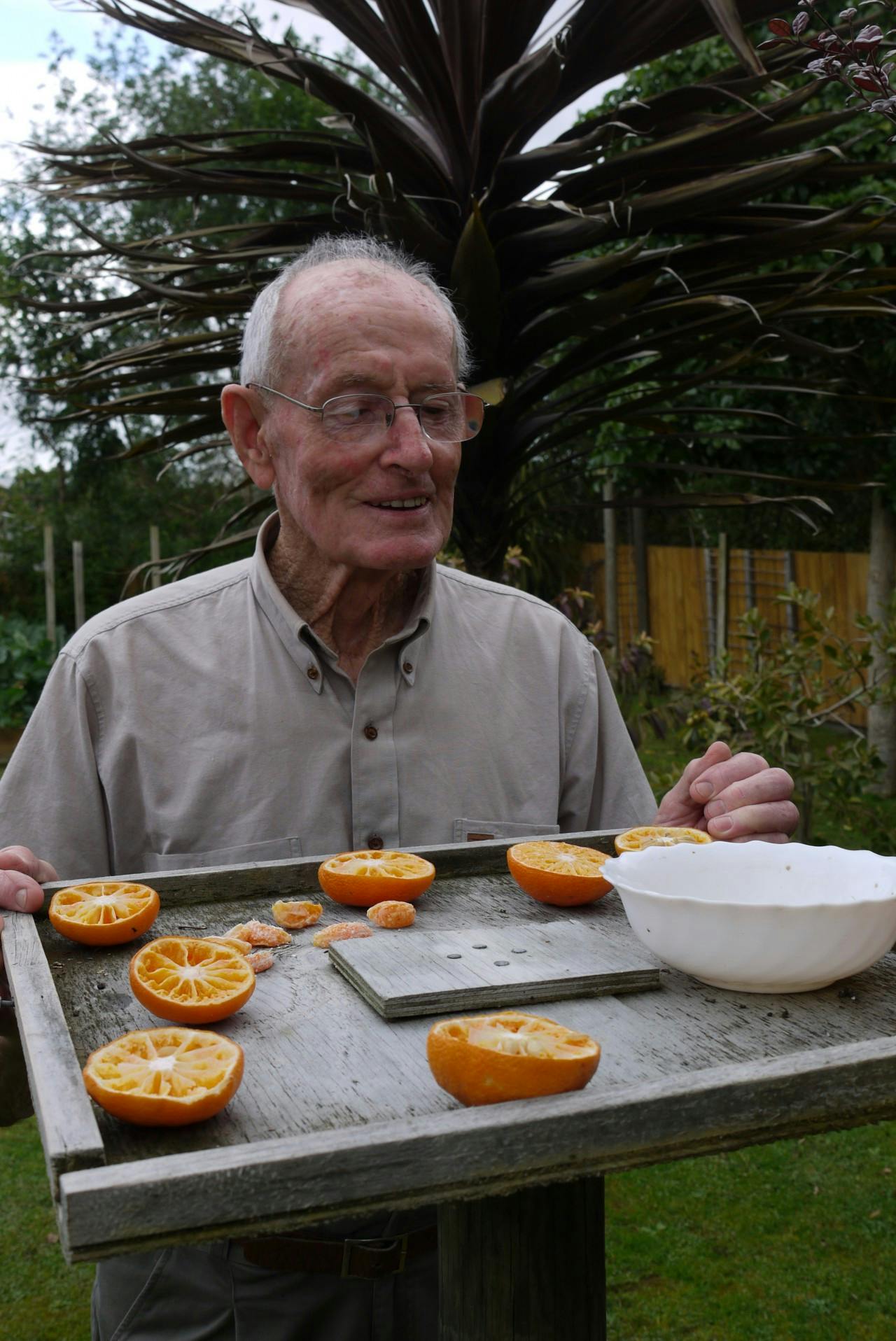Wilderness meets one of New Zealand’s most prolific and renowned bird watchers
John Kendrick may be a few months shy of turning 90, but age doesn’t seem to have slowed him down.
He’s just done a round of radio and print interviews and is slated to speak at the official launch of the book New Zealand Bird Calls for which he provided a CD of 60 bird songs when Wilderness called by his home in Waipu north of Auckland.
Most people will have heard Kendrick’s work, even if they don’t know it. For more than 40 years he’s provided the bird songs played on Radio New Zealand’s morning programme. It’s a gig he landed in 1969 after complaining about the “squeaky” bellbird recording the station was playing every morning. He offered up his far more “melodious” recordings and they’ve been played ever since.
Kendrick’s passion for birds has been lifelong. He started bird watching at five when he and his older sister set up a bird club.
At Hamilton High he became interested in electronics and learnt Morse code, which led to a role in the army transcribing Japanese communications during the Second World War. His love of radios and birds led him to dream about recording bird song.
Dream became reality when, due to health reasons, he resigned his commission in 1945. Recovering at his parent’s home near Cambridge, he built his first tape recorder and began recording bird song. He then spent eight years running his own electronics business in Hamilton, all the while making more and more recordings. When the Wildlife Service heard what he was doing, a new career beckoned: bird conservation.
He started out by helping the service conduct a bird survey on Mercury Island in 1962. “It was a wonderful experience,” Kendrick recalls. “I saw masses of birds I had never seen before – all sorts of petrels and shearwaters and loads and loads of other birds.”
But it wasn’t for another eight years that his recording skills would be put to use. In 1963, conservationist Don Merton invited Kendrick to study saddlebacks on Hen Island. Kendrick took his recording equipment and the songs he captured on that trip proved pivotal to a follow up trip where he and Merton aimed to catch 30 saddlebacks to relocate to neighbouring Middle Chicken Island. “The reaction when you played the recording was incredible,” recalls Kendrick. “I put my speakers up on either side of the net and the birds responded by flying into it! It works incredibly well.”
It was the start of bird translocations in this country which over the years have ensured the survival of numerous species facing the threat of extinction. Nearly 50 years later, Kendrick believes the big die-off of birds has ended, but the slow decline of birds in areas where they are not protected will continue.
“I’ve been lucky to see so many birds that are now extinct,” he says, then pauses and reconsiders his comment: “Not so much lucky, it’s sad more than anything else to see these birds that were once thriving now gone.”
But Kendrick is right, he is lucky. Or just very good at spotting birds. He well remembers the “stupendous” dawn chorus in the Raukumara Range in the 1960s – one of the last places in New Zealand to be invaded by introduced predators. There were stitchbirds galore back then and plenty of blue ducks, too. He is also the last person to ever see North and South Island bush wren and he once saw a South Island kokako. He believes there’s a good chance the kokako still survives in some remote corner of the Mainland. “It could be,” he says. “It is such an incredibly hard bird to view.”
Of all the birds Kendrick has seen and recorded – he’s made more than 400 recordings since 1947 – one stands out above all others. “My favourite bird has to be the kokako,” he says, imitating its haunting call for me with uncanny skill. “It’s an amazing creature.”
New Zealand Bird Calls will be reviewed in the January 2012 issue.








